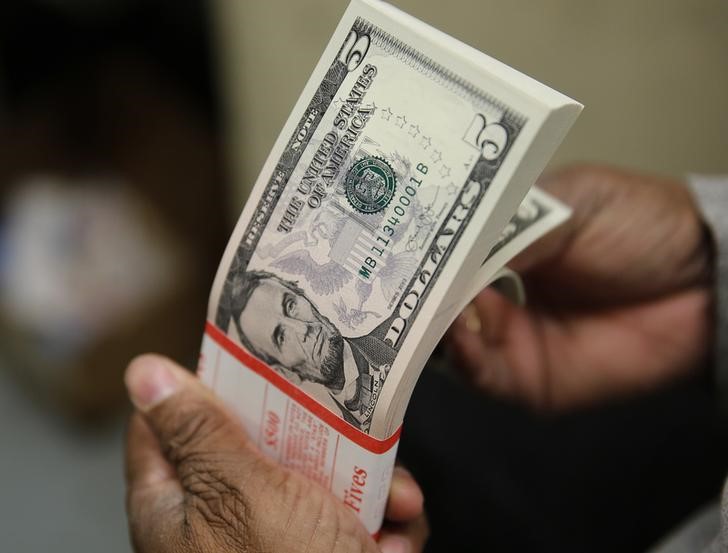By Peter Nurse
Investing.com - The dollar pushed higher in early European trading Friday, with the safe haven in demand as risk sentiment takes a hit on the back of turmoil in equity markets.
At 3:55 AM ET (0755 GMT), the Dollar Index, which tracks the greenback against a basket of six other currencies, was up 0.3% at 90.690, adding on to Wednesday’s 0.6% gain.
USD/JPY rose 0.3% at 104.50, GBP/USD fell 0.1% to 1.3708, EUR/USD fell 0.2% to $1.2102, while the risk-sensitive AUD/USD dropped 0.3% at 0.7656.
U.S. stock futures moved sharply lower in early morning trading on Friday, with Wall Street’s main equity indices on course for their worst week since the end of October. Hedge funds have been forced to liquidate positions to generate funds after their short positions in a number of stocks ran into a wave of buying from retail traders.
This volatility in the equity markets has prompted safe-harbor demand for the U.S. currency.
Also helping the greenback was the release of some positive U.S. economic data on Thursday, with the weekly initial jobless claims falling more than expected. Fourth-quarter GDP, meanwhile, slowed sharply but stayed positive, growing at annualized rate of 4.0%.
“The economy will likely continue struggling for the next month or two, but with vaccinations accelerating and households looking cash rich, a reopening of the economy could see growth reach multi-decade highs,” said ING analyst Carsten Brzeski, in a research note.
By contrast, the euro-zone economy is likely to shrink again in the first quarter given the stringent lockdowns while the vaccination campaign is hardly pulling up trees.
The French economy lurched back into contraction in the final quarter of last year, shrinking 1.3% in the final three months of last year after surging 18.5% in the previous quarter, when it staged a strong rebound following a first lockdown. Austria's fell 4.3% as the start of winter tourism season fell flat. However, Spain's GDP defied expectations for a fall by growing 0.4%.
“Our bearish dollar view for 2021 has been built firstly on the Federal Reserve keeping policy very loose and secondly on the synchronised global recovery providing attractive alternatives outside of the US. Both premises are coming into question,” added Brzeski.
Investors are also awaiting news of U.S. President Joe Biden’s fiscal spending package, with the delay in its approval suggesting that the proposed $1.9 trillion deal will not end up being as large as expected, meaning less borrowing for the dollar to cope with.
